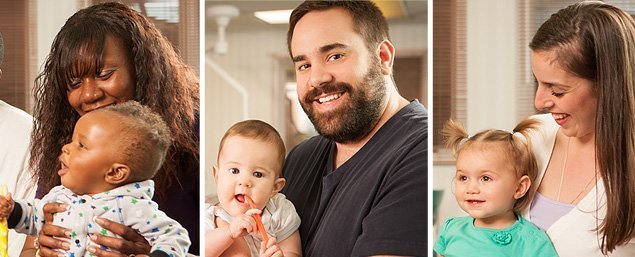Many parents believe that primary (baby) teeth are less important than permanent teeth because primary teeth are going to “fall out anyway.” However, primary teeth are key to a child’s growth and development in five important ways.
Maintaining good health. The health of primary teeth affects children’s overall health and well-being. Untreated tooth decay in primary teeth can lead to infections that can cause fever and discomfort. Infection from an abscessed primary tooth can spread to other areas in the head and neck and lead to pain, severe swelling, and, in rare cases, death. Using antibiotics to treat dental infections may work temporarily. However, the infection will always return if the decay is not treated.
Maintaining good nutrition with proper chewing. To grow and be strong, children need to eat healthy food every day. Children with decay in their primary teeth are less likely to eat crunchy foods, such as fresh fruits and vegetables, that promote good nutrition and a healthy weight. These children are also at risk for developing dietary deficiencies and becoming malnourished.
Helping with development of speech. Missing teeth can interfere with the development a young child’s speech. Young children with missing teeth have difficulty making “th,” “la,” and other sounds. This can make it hard for others to understand the child. In some cases the child may need speech therapy to change speech patterns he or she developed because of missing teeth.
Maintaining space for permanent teeth. Primary teeth hold space for permanent teeth developing underneath them in the jaw. This picture of an X-ray shows the permanent teeth developing below the primary teeth. If primary teeth are lost too early, teeth in the mouth move into the space and block the space for the incoming permanent teeth. This can cause crowding of the permanent teeth.
Promoting self-esteem and confidence. Young children can be quick to point out other children with teeth that are decayed, chipped, or discolored. Children with tooth decay tend to avoid smiling, cover their mouth with their hands when they speak, or minimize interaction with others. A healthy smile gives children the self-confidence they need to have positive social experiences.
Tooth decay in primary teeth matters. Children with pain from tooth decay do more poorly in school and have more behavior problems. Untreated tooth decay can also spread from one tooth to another. Children with severe tooth decay may need to be put to sleep and receive treatment in a hospital operating room.
Brushing primary teeth with fluoride toothpaste every day promotes good oral health. Parents should begin brushing a baby’s teeth with a smear (rice-sized amount) of fluoride toothpaste twice a day as soon as the first tooth appears in the mouth. Making this a daily habit lowers the amount of bacteria in the mouth, helps prevent tooth decay, and starts a lifetime of good oral health habits.
Having a dental visit by age 1 promotes good oral health. The American Academy of Pediatric Dentistry recommends that a child have his or her first dental visit by age 1. A young child’s dental visit is simple and quick. The oral health professional examines the child’s mouth, identifies potential problems, and explains what changes to expect in the child’s mouth as he or she develops and grows. The oral health professional also shows parents how to take care of their child’s teeth and applies fluoride varnish to the child’s teeth.
National Center on Health Brush Up on Oral Health Newsletter Staff
The National Center on Health encourages you to subscribe to the newsletter and welcomes your feedback on this issue and suggestions for topics for future issues. Please forward your comments to
nchinfo@aap.org or call (888) 227-5125 FREE.
Read all issues of Brush Up on Oral Health at
Early Childhood Learning & Knowledge Center. This newsletter was prepared under contract #9OHC0005 for the U.S. Department of Health and Human Services, Administration for Children and Families, Office of Head Start, by the National Center on Health. This publication is in the public domain, and no copyright can be claimed by persons or organizations.






